The content of the article
- 1 How to get a quality garlic crop
- 2 How to choose a good garlic seedlings in the winter
- 3 How winter garlic is processed before planting
- 4 Elimination of diseases from planting material
- 5 How to cultivate the soil before planting garlic in the winter
- 6 Young seedling care
- 7 Video: what and how to pickle garlic before planting
In order to get a healthy and generous crop, you need to know certain details of planting: choose the right place, follow the planting sequence to restore the soil, prepare the soil, select suitable seedlings, plant and fertilize the plant correctly, and then provide regular care for the beds.
With garlic, special difficulties do not arise, it is a bactericidal plant that independently copes with many negative factors. However, for the crop to be tasty and plentiful, seedlings must be worked on.
How to get a quality garlic crop
Fragrant spicy cloves of garlic obtained from winter plants. They make their way early in March and ripen all summer, gaining juice and useful minerals. The head of such garlic has a central stem and large dense cloves located around it. It is such garlic that is planted in the fall for rooting.
The first spring crop obtained for seedlings is not used for culinary purposes, and the whole planted on winter crops. A suitable crop from such seedlings will be only in the second year.
One way or another, garlic is planted in the winter in October after the Indian summer, when the cool temperature is established. Planted cloves take root, but do not have time to germinate before the first frosts. By spring, plants begin to release early greens and mature.
How to choose a good garlic seedlings in the winter
Only dense, whole, dry large heads with no signs of disease are selected. All doubtful, friable, darkened fruits are unsuitable for reproduction. Bulbs divide them into segments, but do not peel them. The natural film protects the teeth of garlic from drying out, rotting and harmful microorganisms. All small and thin cloves should be discarded. Such garlic is useful in the kitchen. It is better not to plant slices with a damaged film, it is likely that they will not overwinter in the soil.
Disassemble the onions into segments should be 2-3 days before planting, otherwise the root bed may dry out and lose the ability to germinate.
How winter garlic is processed before planting
To make sure that the cloves are not infected with fungi that can develop in the soil after planting, they must be sterilized.
The easiest way is to dry the teeth in the oven. This is done very carefully so as not to bake garlic in its own juice, otherwise it will lose its manpower and will not germinate. To calcine garlic for sterilization, you need:
- preheat the oven to 40-42 degrees;
- line a baking sheet with a sheet of parchment and distribute garlic cloves on it;
- Do not close the oven door tightly so that air ventilation remains;
- dry garlic for 9-12 hours, turning on different sides;
- monitor safety if the oven is gas.
It is even better to use a special electric dryer or a frying oven, with garlic placed on the surface.
Another method of processing garlic is rinsing in potassium permanganate.You will need to make a weak pink solution in the proportions of 1 tsp. manganese powder per 10 liters of hot water. Soak in this composition seed should be for 10 hours.
Another good tool is ash ash. It is enough to dilute 400 g of ordinary wood ash in 2 l of water and boil the composition for 30 minutes. After cooling, you need to put the garlic teeth in the liquid and soak for 2 hours. This method is environmentally friendly and suitable for proponents of natural processing of plants.
After sterilization procedures, the teeth are dried.
Elimination of diseases from planting material
The above recipes are necessary for preventive purposes. If obvious traces of the disease are found on the garlic, it is too early to get upset; You can use the drug Fitosporin-M for processing. It is diluted in water according to the instructions and the seed is soaked for half an hour. Before planting garlic, such a solution also needs to be poured into the holes in the garden.
An alternative remedy is Maxim. These household substances will save plants from fungal and bacterial diseases and save the future crop.
Another method of ecological cleaning of seedlings is rinsing with 1% solution of copper sulfate. The procedure is done in stages:
- First, prepare the salt mixture. 3 tbsp salt should be diluted in 5 liters of water. 2 minutes stand the cloves of garlic in this liquid.
- Then half an hour soaked in vitriol. The solution is made from 1 tsp. substances per 10 liters of water.
It is necessary to deal with damage to the seed because the development of fungal and bacterial diseases in the soil threatens not only a particular sprout, but also neighboring plants. In order not to spoil the entire crop, processing is simply necessary.
How to cultivate the soil before planting garlic in the winter
- 2 weeks before planting garlic, the soil is dug up and sprinkled with potassium sulfate and double superphosphate - 2 and 1 tablespoon per square, respectively. Also, the soil is generously fertilized with humus. Prepared beds are allowed to breathe and settle and only after 14-16 days plant garlic in the ground.
- A couple of days before planting the seed, the soil must be treated with urea (urea). The consumption of a substance occurs at the rate of 1 tbsp. on 2 square meters of land. In dry weather, after such treatment, the land must be abundantly watered.
- If garlic is planted after potatoes or tomatoes, the earth must be treated with copper sulfate to remove possible traces of plant fungi. The solution is made according to the classic recipe: 1 tbsp. copper sulfate is diluted in 2 l of heated water. 10 liters of solution can be treated with 2 square meters of beds.
Some owners refrain from synthetic fertilizers and do not want chemical solutions to fall into the crop. If you need a natural tillage from fungi - the beds are pre-planted with greens, and then digged, leaving compost in the ground.
Planting of "fertilizer" takes place in mid-August - early September. As assistants use seeds of mustard, oats and green peas. They are rarely (at a great distance from each other) sown in future garlic beds. By the time the garlic is planted, you should get shoots of 20-35 cm, consisting of woven greens. Such a “vitamin cocktail” will be an excellent top dressing for spring.
Other owners propose to “fasten” the earth with rye. It is important that the beds do not stand idle and do not overgrow with weed. Grasses draw water from the earth and keep the earth alive. Moreover, weeds usually behave aggressively and greatly deplete the soil, and sometimes it is very difficult to eradicate weeds. Therefore, the land is sown with noble greens, and when it comes time to plant garlic, the soil is in a loose moist state and is well prepared for planting winter crops.
Young seedling care
Garlic itself has protective juices and repels the characteristic zinc odor of pests not only from its own beds, but also from neighboring ones. Therefore, next to spicy herbs, it is recommended to plant tomatoes, salad and beans, which are often attacked by pests.
However, be careful! Some plants, adjacent to garlic, have a negative effect on vegetable yield. So, for example, next to it is not recommended to plant asparagus, spinach, beets and carrots.
To get a generous and tasty harvest of garlic, carefully select large teeth for seedlings, disinfect them according to the recommendations, process the beds - and the result can exceed expectations.
Video: what and how to pickle garlic before planting

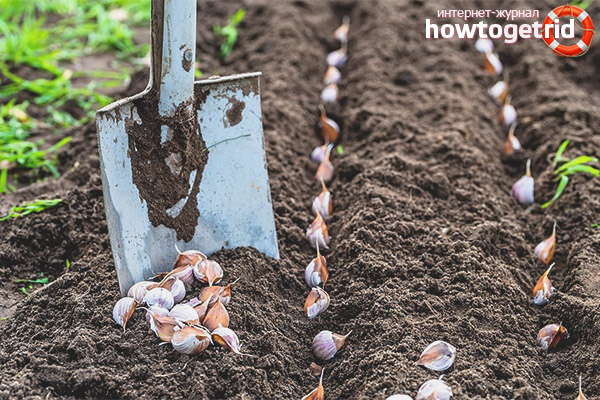

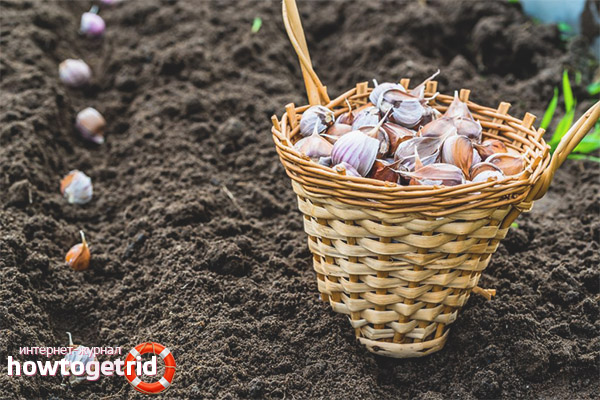
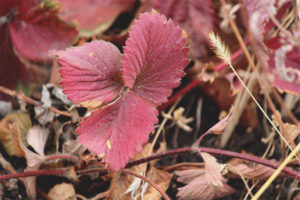
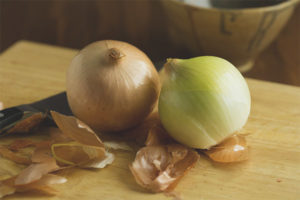

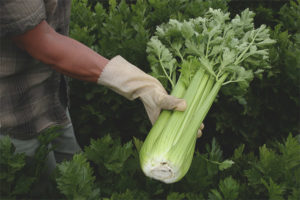
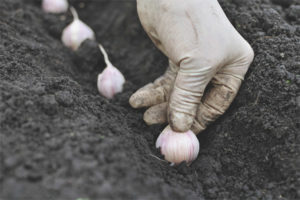
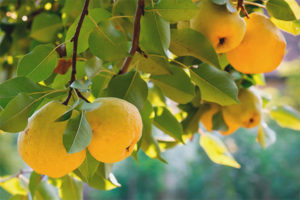
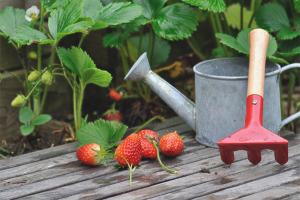
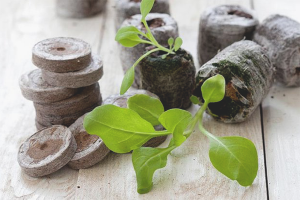
Submit